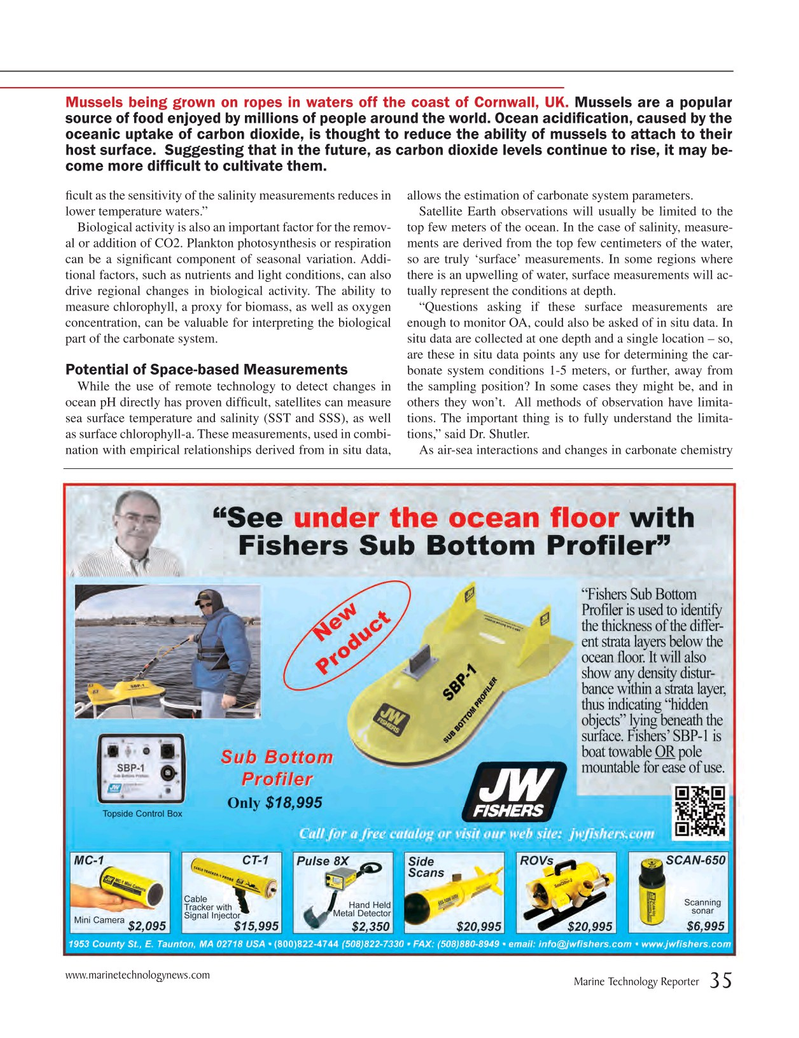
Page 35: of Marine Technology Magazine (May 2015)
Underwater Defense
Read this page in Pdf, Flash or Html5 edition of May 2015 Marine Technology Magazine
Mussels being grown on ropes in waters off the coast of Cornwall, UK. Mussels are a popular source of food enjoyed by millions of people around the world. Ocean acidi? cation, caused by the oceanic uptake of carbon dioxide, is thought to reduce the ability of mussels to attach to their host surface. Suggesting that in the future, as carbon dioxide levels continue to rise, it may be- come more dif? cult to cultivate them.
? cult as the sensitivity of the salinity measurements reduces in allows the estimation of carbonate system parameters.
lower temperature waters.” Satellite Earth observations will usually be limited to the
Biological activity is also an important factor for the remov- top few meters of the ocean. In the case of salinity, measure- al or addition of CO2. Plankton photosynthesis or respiration ments are derived from the top few centimeters of the water, can be a signi?cant component of seasonal variation. Addi- so are truly ‘surface’ measurements. In some regions where tional factors, such as nutrients and light conditions, can also there is an upwelling of water, surface measurements will ac- drive regional changes in biological activity. The ability to tually represent the conditions at depth.
measure chlorophyll, a proxy for biomass, as well as oxygen “Questions asking if these surface measurements are concentration, can be valuable for interpreting the biological enough to monitor OA, could also be asked of in situ data. In part of the carbonate system. situ data are collected at one depth and a single location – so, are these in situ data points any use for determining the car-
Potential of Space-based Measurements bonate system conditions 1-5 meters, or further, away from
While the use of remote technology to detect changes in the sampling position? In some cases they might be, and in ocean pH directly has proven dif? cult, satellites can measure others they won’t. All methods of observation have limita- sea surface temperature and salinity (SST and SSS), as well tions. The important thing is to fully understand the limita- as surface chlorophyll-a. These measurements, used in combi- tions,” said Dr. Shutler.
nation with empirical relationships derived from in situ data, As air-sea interactions and changes in carbonate chemistry www.marinetechnologynews.com
Marine Technology Reporter 35
MTR #4 (34-49).indd 35 MTR #4 (34-49).indd 35 4/28/2015 9:52:34 AM4/28/2015 9:52:34 AM

 34
34

 36
36
